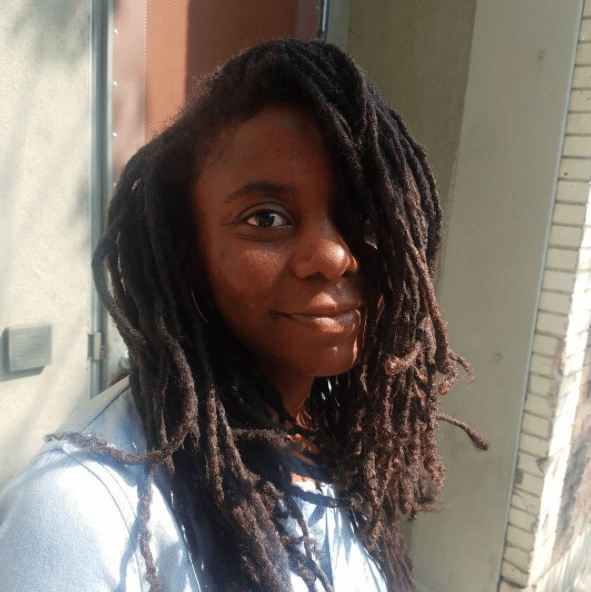‘My Neighbors Would Look at Me Like an Alien’: Women of Gentrification
Places like my hometown of San Jose, and nearby Oakland and San Francisco, have been hit hard by the tech industry.

“There is no such thing as a ‘bad neighborhood.'”
I grew up hearing my mother say this phrase. On that day in September, it was from her newly renovated kitchen as we sat staving off the sweltering San Jose sun, which heated the outside world to an intolerable 106 degrees Fahrenheit.
She bought this small two-bedroom house in the northeastern part of the city in the late 1980s before the overall area transitioned from bucolic fruit orchards to an epicenter of Silicon Valley; before home values in the region were calibrated by their distance from the Apple campus. She lives across the street from Mexican, South Asian, and Filipino families. They water each other’s plants on a revolving cycle, taking turns when the members of each household are making their annual pilgrimage back to their respective homelands.
Early this year, the first Airbnb established itself next door. Tech-inspired t-shirts adorn the steady stream of young men coming in and out of its doors, a harbinger of what has yet to befall this small tight-knit community of color. It betrays the ominous certainty that my mother is one of the lucky few women whose home has survived the displacement now commonplace in the region.
In the Bay Area, there are women on all sides of gentrification. Some experience it as the brute force pushing them out of their homes while others seem complicit in its machinations. The situation provides a snapshot of what happens when women-led movements, along with other policymakers, fail to take race and class into account.
Places like my hometown and nearby Oakland and San Francisco have been hit hard by the tech industry. In 2013, researchers found more than 53 percent of low-income households in the region were at risk for or already experiencing gentrification. This makes up nearly half of the Bay Area’s total Census tracts. Even outside of San Francisco, the average price of a house is $895,000. University of California, Berkeley’s Urban Displacement Project foretells even higher housing prices and accelerating pressure on impoverished residents to relocate. In other words, the crisis is only half complete.
And although tech workers are overwhelmingly male, studies suggest women also play a significant role when it comes to gentrification. Bourgeois values of femininity, coupled with consumerism and racism, make the actions of women—especially white women—particularly consequential. That, in turn, exacerbates and expedites the displacement of existing communities of color while attracting and retaining white residents.
Two years ago, Essence Harden moved to Los Angeles from Oakland, after spending 30 years in what’s affectionately called “the town.” There was palpable pride in her voice when she said, “I am third-generation Oakland.”

Harden is one of many Black residents to have left the Bay Area because of cost and loss of community. Between 1990 and 2011, Oakland’s Black population fell from 43 to 26 percent, the largest drop of any racial group.
Before leaving, she restored and maintained the same 1920s-era apartment for ten years, refinishing the floors and creating a garden. Harden sees her labor, and that of those around her as part of a “rich cultural history, people have bled and died with no government support; maintained these homes and these blocks.”
She says the dark side of efforts like hers is that gentrifiers desire the results, but not the laborers: “Folks see that and want it and have no concern for who did it. My [new] neighbors would look at me like an alien. That’s one of the worst feelings, especially as a Black person.”
The dynamics of gentrification in the San Francisco Bay Area are clear: voracious consumption of the urban aesthetic minus the people of color. San Francisco’s Mission District will lose 17 percent of its Latino population by 2025. The concentration of Asian residents in San Francisco’s greater Chinatown has declined since 1980, and the number of people living in San Jose’s Diridon Station neighborhood without a college degree has fallen by over half in the same period. The Anti-Eviction Mapping Project suggests a direct relationship between high rent and the number of artisanal coffee shops, “vintage clothing shops, the art galleries, the restaurants that use mason jars in place of glasses,” and “the man-bun-sporting white” millennials.
And stories like Harden’s and Regina Fields’—who moved to Chicago in 2016—are commonplace. Fields laughs wryly when I describe the article I’m writing. As we talk music and their new theater blog, Fields, who uses multiple pronouns including “he,” “she,” and “they,” casually names five friends and family members who have left Oakland due to affordability.
Fields was first displaced from Oakland as a child. “Our neighborhood just started changing. There was some gang action, but it wasn’t heavy. [The city] used cleaning it up as an excuse. Almost immediately after [we left] all the houses were vacated,” she said. As an adult she bounced around surrounding areas like Santa Clara, San Rafael, and San Francisco before eventually leaving California last year. She said, “I was moving because I couldn’t get a lease. I just couldn’t afford to live there as an artist.”
Fields and Harden left within the last few years—and some local organizers appear to be focusing on making sure newcomers can stay, rather than on preventing any more shifts from occurring.
Laura Foote Clark is the executive director of SF YIMBY Action, an acronym for “yes in my backyard.” The organization is part of a national movement advocating the hyper-development of market-rate housing for new migrants.
Both of Clark’s parents were in nonprofit work. She’s a self-described “one-person political startup.” Clark talks extensively about a collective “we” at the heart of her organizing. When asked who she identifies as those struggling in her community, she describes people in marketing or sales: those who make “a good salary, who should make enough but it doesn’t cut it.”
Sonja Trauss is the head of the San Francisco Bay Area Renters Federation and arguably the most visible YIMBY. Trauss has been in the Bay Area for six years. She’s currently campaigning for District 6 Supervisor in San Francisco’s Tenderloin District, the city’s most racially and economically diverse neighborhood. The Tenderloin hosts one of the most contemptuous debates regarding the impact of the city’s push to develop at the cost of its low-income residents of color. Trauss told Rewire her “base is anyone who moved in the last two years. Or five years. Anyone who doesn’t have housing facilities who can’t move or wants to move” into the city.
Trauss and Clark agree the housing climate is unsustainable, but their focus doesn’t appear to be on poor people of color or their families. Clark worries about a specific population. She said, “millennials can’t engage with that [housing] system, young people can’t engage with that system.”
Trauss, meanwhile, told Rewire, “Here my demographic is newcomers who are renters who ended up being white.”
Despite any seemingly positive optics of women like Trauss and Clark trying to counter displacement caused by the predominantly male tech boom, gentrification patterns continue to illustrate that non-intersectional female leadership is simply not enough to protect the most marginalized communities.
In contrast, organizations like Causa Justa and Asian Pacific Environmental Network (APEN) are building people-of-color centered anti-gentrification movements across the Bay Area. In 2016, they passed Measure JJ to protect Oakland renters against unjust evictions. APEN’s base is low-income immigrant and refugee communities: people like my mother.
A week after our conversation, I take my mother to a nearby farmer’s market. Nestled in Chinatown, it’s stocked with her favorite summer staples: bittermelon, okra, and stone fruit.
She wants eggs, so I ask a vendor if he has any. In Vietnamese, he tells me the market won’t give him a permit to sell chicken eggs, just duck, so he refers me to another booth. The woman in the stall has kind blue eyes, blond hair, and stacks of brown eggs. My mother smiles at her. Glancing quickly at the $8 price tag, she nudges me to move on. “Too expensive,” she says.

